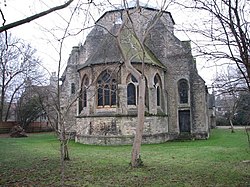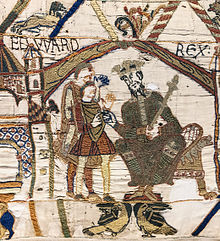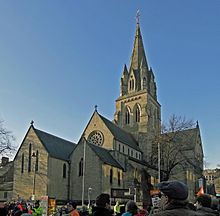I am reminded of the oft quoted line of Walter Bagehot that there are arguments for having a splendid monarchy and arguments for having no monarchy but that there are no arguments for having a mean monarchy.
In commenting on the report I would want to begin by sounding a ( hopefully) somewhat sceptical note. We have seen thiers ideas, more or les, before and it is only really at this point that serious planning begins. The source for this story is presumably a ‘working document’ from the Golden Orb committee and plus some input from Lt Col Anthony Mather, who was a principal figure in organising the late Queen’s funeral. No-one could dispute that was a very splendid yet sombre occasion, meticulously planned and carried out, with variables resolved over long planning. Its dignity and order were acknowledged worldwide. The Coronation is different. It has far more fixed points of practice and reference, and is far more ancient as a Rite. It is another occasion on which the transmission of authority can be symbolically enacted for the benefit of the King’s people and realms, and to convey that sense of a dynamic living tradition to them and to the wider world.
That allowances may have to be made for the fact that the King and Queen are in their mid-seventies as were made for the recuperating 61 year old King Edward VII in 1902 is reasonable. That said no-one could fail to be impressed by the stamina displayed by the new King and Queen in the first ten days of their reign.
It is also sensitive and sensible to bear in mind the current economic situation for the country, although 1953 was not yet a time of affluence for many, and such rationing as still existed was largely phased out to mark the Queen’s Coronation. Vast espenditure might well be tactless, yet a reasonable amount could both encourage the economy, and raise national morale - unless someone is really determined to be miserable.
The plan to reduce numbers in Westminster Abbey may not be such a bad thing. Obscuring the interior with tiered seating hides the beauty of the building - and at some Coronations in the nineteenth century seating went right across the top of St Edward’s Chapel. Giving seats to all of the Lords and the Commons may indeed not be necessary, nor to the perceived ‘great and good’ who were there in the past to represent the nation. Now, much more even than in 1953 television can bring the ceremony into the homes and the internet of all who want to watch.
The changes in the composition of the House of Lords in 1958 and 1963, and the removal of most of the hereditary peers in 1999 have certainly changed the composition of the Lords, and seating all, together with their spouses, would be very difficult without some balloted reduction.
The suggestion that the Court of Claims might not meet would be a serious loss of an institution that goes back at least to 1377. At recent Coronations it has ruled that claims disallowed on previous occasions would not be reconsidered. So simply to apply the 1953 rulings might save a bit of time, but it should be retained as a process.
Thus far the suggested plans are therefore not unrealistic and reflect changes that have occurred over the past seventy years.
When it comes to the matter of Peers robes it could, of course, be said that they are a relatively modern invention, dating only from the 1685 Coronation of King James II. The Parliamentary robes date from at least the early fifteenth century. That said Lt.Col Mather may want to consign them to a museum but what, on that basis, would he say if he was told that the Household Dvision were to wear battle dress for the Coronation?
As to those attending wearing morning dress or lounge suits takes us back to the Privy Councillors at the Accession Council. Some wore full morning dress, others dark lounge suits. To my eye who wore what was indicative of their attitude. I was pleased to note that the one Privy Councillor whom I know as a friend was in full morning dress - but as I am not a name-dropper he shall retain his anonymity. None, alas, were wearing Privy Councillor’s uniform. Not to wear at least morning dress would be disrespectful to what is going on at a Coronation. These days morning dress is ever more frequently seen at ordinary weddings, so it should certainly be for a unique, national event. Better of course white tie or Court dress.
It would be a grave and tragic mistake to lose parts of the traditional ceremony. This happened with the pruned back ceremony for King William IV’s Coronation in 1831. Virtually none of that has been restored.
In 1953 Queen Elizabeth II expressed her wish to restore missing aspects of the liturgy. One result was inpposition of the armils for the first time since the Coronation of King Charles I in 1626 - new ones being provided by the Commonwealth realms as those made in 1661 were too large for Her Majesty’s wrists.
I find it very hard to believe that the King, who has been notably punctilious and traditional in many aspects of ceremonial, religious observance and with regard to many projects such as saving and restoring Dumfries House and supporting historical endeavours such as raising the Mary Rose would wish to see a mutilation of the most important event and day of his reign.
It leads me to ask, as a medievalist, if this is really from the King - or from his “evil councillors”? If the latter what do they know about the havoc they seek to wreck? Are they akin to the modernist liturgists unleashed with blinkered historical understanding on the Catholic liturgy in the 1960s. The “brains” behind what is apparently being proposed seem to want to create a colourful pageant rather than a profoundly spiritual liturgy that links the monarch, his consort and his people one to another, to the centuries that have gone before and to the future.
It is said that the intention is to perform the ceremony in something like an hour. Frankly it is difficult to see that as possible at all without completely mutilating the ritual. Absolutely necessary parts of the ceremony include the Oath, the anointing, the actual coronation of the King and then of the Queen, and, presumably, the Eucharist - unless like 1685 it is omitted. Then at least it was because the King and Queen were devout Roman Catholics, not in order to save time. To do so would, especially in this secular age, rob the occasion of its sacramentality and of its ability to speak of faith to the national communities.
This is surely where Anglican liturgical scholars like E.C.Ratcliff in 1953 need to make a serious case. One might wonder if Archbishop Welby is up to doing that himself, but he owes it to the rights and privileges of the See of Canterbury and of the Church of England to make sure it is made. At very least the ghosts of Archbishops Lang and Fisher should trouble him if he does not.
Indeed the Mail on Sunday article speaks of the central rite of anointing almost as if it is a pretty custom which has managed to avoid the cut - do the authors of such articles understand anything about what will take place and the significance of the King’s chrismation? Patently not.
Similarly the gold wedge traditionally offered by the monarch is to be jettisoned because of some idea that this will resonate badly in current circumstances. It is of course part of the offertory, as in any public eucharistic act. Why pick on that? Clearly the Coronation will cost something. In the totality of government spending it is a trifling sum. If people are so pathetically money-minded they should bear in mind the positive economic benefits generated by Coronations in terms of manufacturing and the loner term revenue generated by visitors, and, as with the late Queen’s funeral of “soft power” for the country.
This is not a done deal and I suspect, indeed hope, will initiate a serious and scholarly debate - hopefully not in the popular press.
I know discussions went on a long time in planning the 1953 Coronation. It is still barely only a month since the King’s accession. A lot can happen between now and a likely Coronation Day next June.
If - and if is the word - and this report is not a kite being flown - this turns out to be what is proposed then those who believe in maintaining our traditional constitutional arrangements as a living one, sensibly adapting to changed circumstances as need be, should speak up. Loudly and clearly. We do not want or need a mangled or truncated rite. There is only one chance to get this right.









